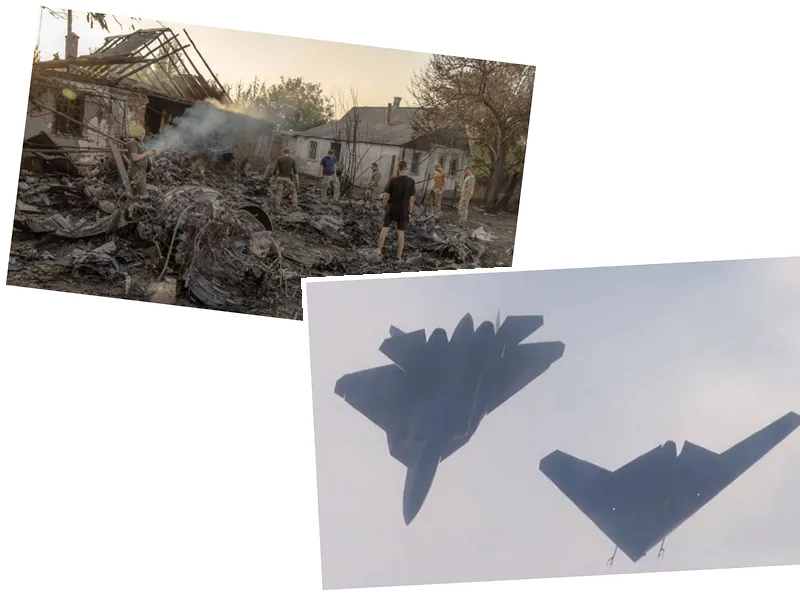Ukraine has made significant strides in its ongoing conflict with Russia, marking a historic moment by targeting and damaging a Sukhoi-57 (Su-57) fighter jet. This event marks the first-ever successful attack on Russia's latest generation of stealth aircraft. The Su-57, situated at the Akhtubinsk airport in Russia’s Astrakhan region, was hit on June 8, 2024, as confirmed by Ukrainian military intelligence. Though not officially claiming responsibility, Ukrainian sources suggest that the operation was carried out using attack drones.
Satellite images shared by Ukrainian intelligence illustrated the damage done to the Su-57, a multi-purpose fighter designed to replace older Soviet aircraft like the Su-27 and MiG-29. As Russia's fifth-generation aircraft, the Su-57 is equipped with advanced electronic systems allowing real-time data exchanges with ground control systems. Its capabilities include both guided and unguided weaponry with a maximum combat load of 10 tons.
Meanwhile, Russia’s bombardments continue to escalate, particularly around western Ukraine. On the night of June 7th, Russia launched an intensive aerial assault, prompting a response from Poland, a NATO member and key Ukrainian ally. Polish fighter jets took to the skies, responding to the Russian Federation’s long-haul flight activities and missile attacks, which encompassed a wide array of UAVs, Shahed drones, and ballistic missiles. The Polish operational command confirmed the activation of all necessary procedures to maintain national airspace safety.
The extensive attack on Ukraine, described as 'massive,' saw the destruction of 48 attack drones and five cruise missiles, thanks to the concerted efforts of Ukraine's air defense, which was bolstered by Western support. The attacks originated from various Russian regions, including Saratov and Primorsko-Akhtarsk, as well as from Crimea. Despite the immediate threats, air defenses managed to neutralize these attacks, although details on potential casualties or damages remain sparse.
Throughout the conflict, various Ukrainian regions such as Dnipropetrovsk, Zaporizhzhia, and the western city of Lviv have frequently been under threat, often forcing quick and decisive protective measures. Communication channels such as Telegram have become critical, keeping civilians informed about the trajectory of drones and missiles while issuing timely air alerts. Quiet nights remain a rare luxury for Ukrainians amid persistent aggression from Russia, making each hour of peace particularly precious.
- The introduction of the Su-57 into Russia’s air force in December 2020 showcased its ambitions to modernize and strengthen its aerial capabilities, emphasizing the aircraft’s ability to overcome enemy air defenses and perform complex operations autonomously.
- Poland’s response to Russia's attacks underscores the broader regional security concerns and the importance of NATO's role in ensuring collective defense. Previous incidents where Russia allegedly violated NATO airspace led to heightened diplomatic tensions, further complicating the regional security landscape.






